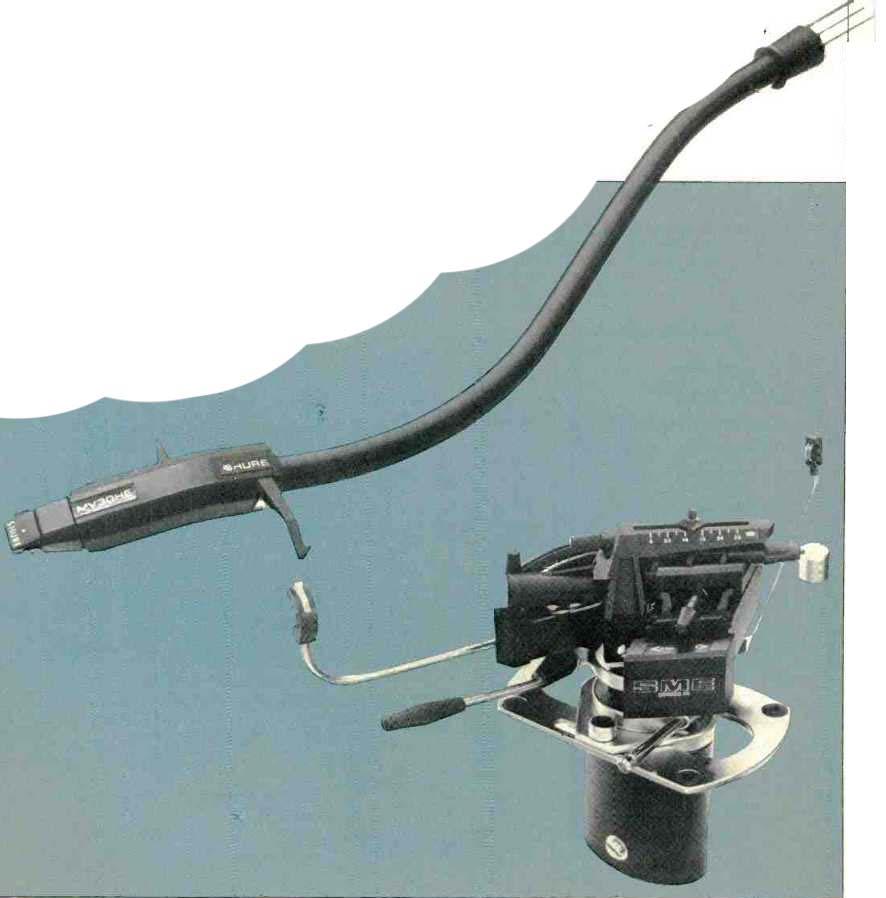
Manufacturer's Specifications
MV30HE Phono Cartridge
Generating System: Moving magnet.
Output Voltage: 3.5 mV (1 kHz, 5 cm/S peak).
Channel Separation: 25 dB at 1 kHz, 15 dB at 10 kHz.
Recommended Load Resistance: 47 kilohms.
Recommended Load Capacitance: 250 pF.
Recommended Tracking Force: 3/4 to 1 1/4 grams.
Playback Frequency Response: 10 Hz to 25 kHz.
Trackability at 1 Gram: 29 cm/S peak at 400 Hz, 42 cm/S peak at 1 kHz: 47 cm/S peak at 5 kHz, 37 cm/S peak at 10 kHz.
Weight: 11.8 grams including carrying arm.
Price: $230.00 including arm; replacement stylus N30HE, $60.00.
3009 III Tonearm
See May 1981 issue, page 44
Overview: The Shure MV30HE cartridge was an excellent performer both during evaluation by the listening panel and during the technical measurements.
When Shure Brothers, Inc. made its debut into the high-fidelity magnetic cartridge market back in the late 1950s, the firm had been manufacturing other types of phono cartridges and a wide variety of microphones for many years. About 1959, Shure introduced a phonographic tour de force in the form of two integrated tonearm/cartridge combinations, one 16 inches and the other 12 inches long, which they called Studio Dynetic Reproducers. They were, at the time, truly extraordinary examples of performance and reliability. Reliability is an interesting subject and one which has been rarely discussed in product reports.
Over the years, there have been many phono cartridges which, while providing increased performance in one area or another, proved to be unreliable after a relatively short period of time and to deteriorate rather rapidly into a state of unlistenability. To a tiny group of audiophiles who change their equipment, especially phono cartridges, only slightly less often than their socks, this lack of durability probably doesn't mean much. But to the majority, reliability and durability are major considerations. To their credit, Shure Brothers has always put reliability very high on its list of engineering requirements. Materials which give improved performance are never incorporated into a product design until the long-term stability characteristics of such materials are tested and verified.
All this leads to the subject of this present report, a brand-new integrated tonearm/cartridge offering from Shure Brothers. In this case, rather than making a complete new tonearm for the new cartridge design, they have mounted the cartridge into a carrying arm for the SME 3009 III or IIIS tonearms, British-made units distributed in the U.S.A. by Shure Brothers. The SME 3009 III tonearm, which was reported on last issue, is a very sophisticated design which eschews the usual removable head shell in favor of what the people at SME call a "carrying arm," The carrying arm normally supplied with the SME 3009 III unit consists of an S-shaped tube with a tight, slip-fit plug on one end and an integrally mounted, nonremovable headshell at the other end. For this new low-mass integrated design, Shure has replaced the usual carbon-fiber headshell with an extremely light cartridge, the MV30HE, permanently mounted to a special SME carrying arm. The plug end of the carrying arm mounts to the main part of the tonearm, close to the pivots. Since the coupling elements and signal-transfer plug and socket are close to the pivots, and since there is no separate headshell or mounting hardware at the cartridge end of the tonearm, the new design certainly must qualify as an integrated tonearm/cartridge combination, and a low-mass one at that. The advantages inherent in an integrated tonearm/cartridge design can be significant. The new Shure MV30HE, while based upon the now-famous V15 Type IV, was designed specifically to complement the SME 3009 III tonearm. It is supplied only as an integral part of a carrying arm for the SME 3009 III so that none of the normal compromises, necessary so that a cartridge can be used in a variety of tonearms, had to be made by Shure in this design.
Although the Shure MV30HE shares some common design parameters with the V15 Type IV, such as a similar magnetic design and the same hyperelliptical stylus, they differ radically in appearance. The MV30HE has none of the mounting accoutrements normally needed by a cartridge to allow it to be mounted in a standard tonearm or headshell, and therefore the new pick up is very streamlined in appearance. The MV30HE does not offer the dynamic stabilizer which is a feature of the V15 Type IV, but its low mass means that the ill effects upon performance usually caused by record surface irregularities are less severe than would be the case for a more massive design. The build-up of lint and dust, which is all but eliminated by the dynamic stabilizer used with the V15 Type IV, did not seem to be a problem with the MV30HE.
MEASURED DATA--- Shure MV30HE Cartridge/Arm Combination

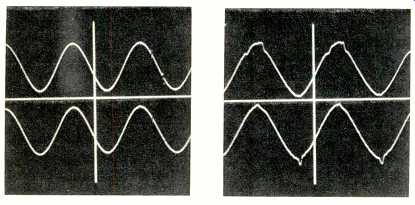
Fig. 1 A--Tracking of CBS STR-112 band 9, 300 Hz at +18 dB re: 11.2 µM;1.0
g tracking force, 1.0 g sidethrust. This photo and Fig. 1B show very good
tracking when playing the highest level bands on these test records. Fig.
1 B-Tracking for B&K 2010 band 3, 1 kHz at +8 dB (17.76 cm/S @
450); 1.25 g tracking force, 1.25 g sidethrust.
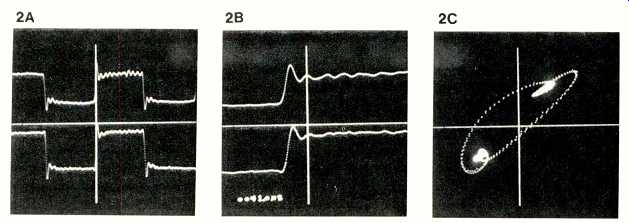
Fig. 2A--CBS STR-112 band 1, 1-kHz square wave; 3.54 cm/S modulation in
each channel. Input loading is R= 47 kilohms, C = 250 pF for Figs. 2A, 2B,
and 2C.
Fig. 2B-Expanded view of 2A; 41 µS is the time of one period at the 24.4-kHz high-frequency resonance.
Fig. 2C-Same as 2A except left vs. right channel showing interchannel phase relationships.
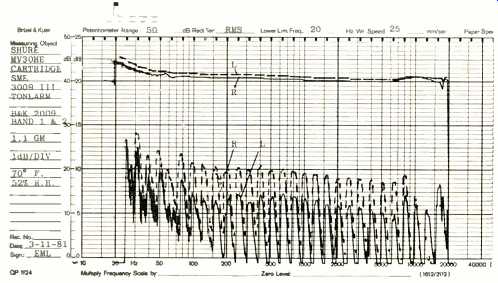
Fig. 3--Amplitude vs. frequency response, and interchannel crosstalk with
input loading as in Fig. 2. The dip at 18 kHz is an artifact of the B&K
2009 test record.
The effective dynamic mass of a tonearm/cartridge combination is the total mass as seen at the stylus and is composed of the distributed mass of the tonearm and cartridge. The dynamic mass of the SME 3009 III carrying arm is on the order of only 5 grams. If the total mass of the MV30HE cartridge, 2.7 grams, is added to this, the total is only 7.7 grams, which is extremely low. The MV30HE weighs only 42 percent as much as the V15 Type IV, which weighs 6.35 grams. The low effective mass of the new MV30HE/3009 III combination results in a very low Q at the main low-frequency resonance of the cartridge/tonearm system. The optimum adjustment of the SME 3009 III tonearm for the lighter mass of the MV30HE required that the counterweights be changed from those used with the V15 Type IV.
This also results in an improvement in the performance due to the overall lowering of the effective dynamic mass.
Shure provides a novel plastic guide which can be used to set the correct stylus azimuth when viewing the cartridge from the front. With the plastic guide temporarily fastened to the MV30HE, the cartridge is rotated in the carrying arm until the horizontal part of the carrying arm is parallel to the record surface. This adjustment should optimize the crosstalk between the right and left channels of stereo records. Of course, there are variations from disc to disc in the azimuth of different disc-cut ting systems, but the validity of making this adjustment was verified to some extent by checking the vertical output from some mono records. The Shure device, when used with the MV30HE as recommended, proved to be very accurate in setting the optimum azimuth.
Figure 1 A shows the left (upper trace) and right (lower trace) channel outputs for the 300-Hz tone on band 5, the highest level band, of CBS test record STR-1 12. As in all of the previous reports, the upper trace will be the left channel unless noted differently. Band 5 is recorded at a level of +18 dB referenced to a groove modulation amplitude of 11.2 µM. The Shure MV30HE tracked this band at only 1.25 grams. This is almost as low as the Shure V15 Type IV, which tracked it at 1.1 grams.
There was only a small amount of jitter evident when tracking this band, much less than that seen from other tonearm/cartridge combinations and only slightly more than that observed during the testing of the V15 Type IV/3009 Ill combination, which was excellent in this respect. It should be remembered that the Shure V15 Type IV had the benefit of the integrally mounted dynamic stabilizer which was very effective in removing jitter induced by record surface irregularities. The antistatic properties of the dynamic stabilizer were also missed at times when playing certain records, which seemed particularly prone to the buildup of electrostatic charges. In the past, with the exception of the SME 3009 III tonearm/Shure V15 Type IV cartridge report, I have shown the results of attempts to accurately track the 300-Hz tone of both band 4 (+15 dB) and band 5 (+18 dB) of the CBS STR-112 test record. Usually, band 5 causes most tonearm/cartridges to severely mistrack. Once again an SME/Shure combination is an exception. Most combi nations are also unable to negotiate the highest level, band 3, of the B&K 2010 test record--at any vertical tracking force. In this case, Fig. 1B shows that the MV30HE/3009 III combination was bettered by only the V15 Type IV/3009 III which is the best tracking combination I have measured so far. During the listening evaluations, no comments were made by the listening panel which could be attributed specifically to mistracking.
Figure 2 shows the response of the MV30HE/3009 III to the 1-kHz square wave on the CBS STR-1 12 test record. Figure 2B, which is an expanded view of Figure 2A, shows what is commonly called "ringing" at high frequencies. Comparing Fig. 2B of this report to Fig. 8B of the previous V15 Type IV report shows that extreme high frequencies above 20 kHz are coming through the electromechanical system of the MV30HE cartridge The initial overshoot is at a frequency related to the natural resonance of the interaction between the effective tip mass of the stylus and the compliance of the stylus shank. The resonance of the stylus mass and record material compliance is at an even higher frequency and is insignificant. One way of analyzing such "ringing" is to consider it as a signal delay phenomenon. The same electromechanical parameters which cause the roll-off of the higher frequencies present in the square wave also cause them to be delayed in time. What one sees, then, can be considered as the initial absence of the high frequency, due to delay, and its appearance at a later time. Of course, a perfect square wave requires that all its individual frequency components be present in the right amounts (amplitude) and at the proper time (phase). If the high frequency is delayed, it leaves a hole, so to speak, and what is seen initially is its absence. If the high-frequency resonance is filtered out almost completely by the electromechanical parameters of the cartridge design, then a vacant spot will appear on the square wave immediately after the over shoot portion. In the case of the MV30HE cartridge, the resonance occurs at 24.4 kHz and Fig. 2B shows that it is not greatly attenuated. This is verified by Fig. 4 which shows that the output at 24.4 kHz from the MV30HE is not attenuated as much as the 23-kHz output from the V15 Type IV (Fig. 11 of the previous report).
Figure 3 shows the response and crosstalk between channels for the MV30HE. The input loading was 47 kilohms and 250 pF.
The B&K 2009 test record was used so a comparison might be made with the V15 Type IV, although this record seems to have high amounts of crosstalk recorded right in the grooves. This is borne out by a comparison to Fig. 4 which shows tests made for crosstalk using the B&K 201 0 test record. Also notice the difference in the high-frequency response between the two records which shows the 2010 record to be down about 3 dB at 20 kHz from the B&K 2009 record. This inconsistency between test records is one of the main obstacles which prevents valid judgments of the quality of phono systems based solely upon objective technical measurements. If records vary this much, even from the same company, imagine the variety which must exist in commercial records! Of course, the test records are valuable in helping to relate technical parameters to subjectively perceived performance as long as the discs' limitations are known and appreciated. Comments from some of the members of the listening panel regarding the good stability of the stereo image on some records could be directly related to the excellent separation indicated by the data of Fig. 4, and to something else which cannot be shown directly in this report, the lack of jitter. This lack of jitter, which can cause a lack of clarity and a smearing of the images, must be credited to a great extent to the SME damping system and to the low effective mass of the MV30HE/3009 Ill combination.
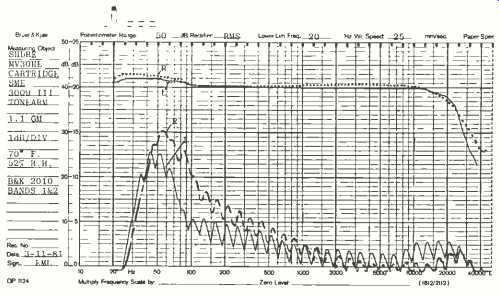
Fig. 4--Amplitude vs. frequency response, and interchannel crosstalk with
input loading as in Fig. 2. This test record, B&K's 2010, has lower crosstalk
and has a recorded output of 20 Hz to 45 kHz.
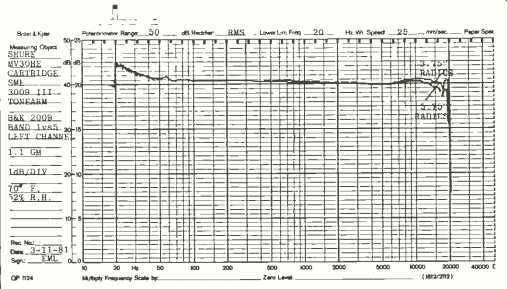
Fig. 5--Scanning loss vs. record diameter, 5.75- and 3.75-inch radii.
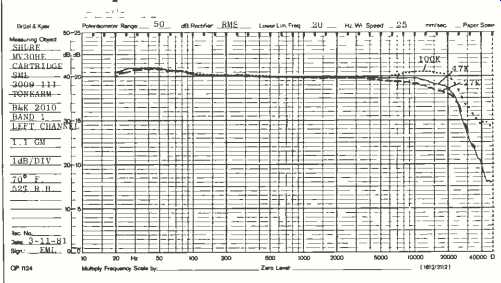
Fig. 6-Effect of resistive loading upon the output using B&K 2010 test
record. C = 250 pF constant.
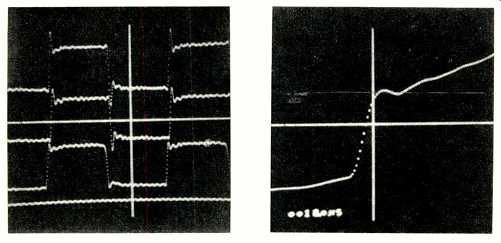
Fig.
7-Effect of resistive loading with CBS STR-112 band 1 record. Top: 100 kilohms;
middle, 47 kilohms; bottom, 27 kilohms; C = 250 pF constant.
Fig. 8-Rise time is 18µS with load of 250 pF and 47 kilohms, very good performance.
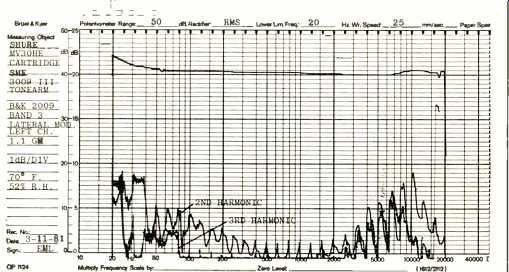
Fig. 9-Second and third harmonic distortion with lateral modulation from
band 3 of the B&K 2009.
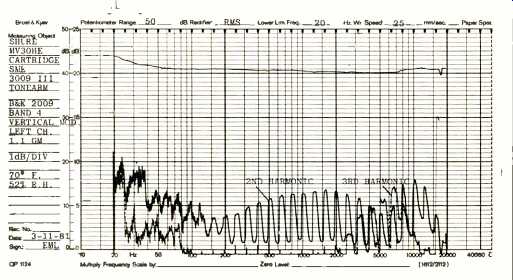
Fig. 10-Second and third harmonic distortion with vertical modulation from
band 4 of the B&K 2009.
A change in tracking force from 0.75 to 1.25 grams caused little change in the amplitude vs. frequency response and is therefore not shown in this report, but the variation of frequency response with record diameter is shown in Fig. 5. The scanning loss characteristic, due to tracing loss or "pinch effect" at the inside record diameter, is not as great as has been seen with some cartridges and must be credited to excellent shape characteristics and orientation of the stylus of the MV30HE.
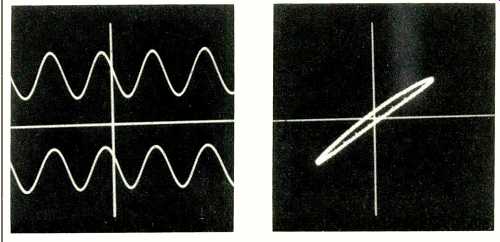
Fig. 11A-Left and right channels at 20 kHz, stop action of sweep tone on
B&K 2009.
Fig. 11B-Left vs. right channels at 20 kHz, as in Fig. 11A. The interchannel phase response is slightly off.

Fig. 12-Low-frequency resonance is at 11.5 Hz with a Q of 1.8 using small
paddle of the SME 3009 III.
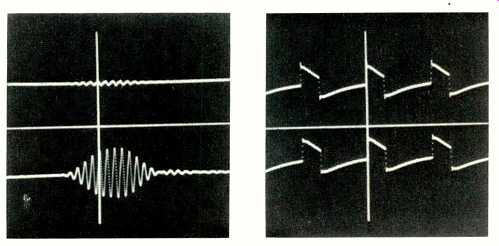
Fig. 13-Response to 10.8-kHz tone burst from Shure TTR-103 test record,
band 4, 30 cm/S peak @ 45°. Right channel, below, shows output, while left
channel shows crosstalk.
Fig. 14-Polarity test using band 12 of JVC's TRS-1004 test disc, 370 Hz, with a 3/7 duty cycle.
Output is negative for modulation of the groove toward the center of the record.
After measuring the variations in amplitude vs. frequency response with changes in input resistance loading (shown in Fig. 6), as well as making many other measurements related to the values of resistance and capacitance input loading, too numerous to include in this report, the values recommended by Shure of 47 kilohms and 250 pF were confirmed as being the best.
These values were used for the remaining technical measurements and for the listening panel evaluations. Although it might appear from Fig. 6 that 100 kilohms would be a better choice, this value allows the input capacitance to have a greater effect upon the high-frequency response and therefore should be avoided. Also, other test records do not show as much high-frequency roll-off as the B&K 2010 test record. The listening panel comments regarding the extreme high frequencies verified the choice of 47 kilohms and 250 pF for the input loading values. All agreed that the top end response was excellent, and such comments as "extended," "clear and precise," and "clean," were noted. The sound was so clear, in fact, that comments were made about what was thought to be modulation noise from the tape master on some records. This type of noise was, of course, absent from some direct-to-disc records to which the panel listened.
Figure 7 shows the effect upon the 1-kHz square wave on the CBS STR-112 test record of variations in the input resistance loading. While making these measurements, the frequency of the "ringing" was checked at 33 1/3 and 45 rpm. No correlation could be found which would be related to the difference in speed, which would be the case if the "ringing" were actually caused by modulation recorded into the grooves. Both the later al and vertical modulation bands of the CBS STR-112 test record were checked since we had seen information to the effect that high-frequency modulation had been found in the grooves by another laboratory. Our tests were necessarily brief, but they seem to indicate that the high frequencies on the square waves of Fig. 7 are not modulated in the grooves of our copies of the CBS STR-112 test records.
The rise time of 18 µS, shown in Fig. 8, for the Shure MV30HE cartridge is about 1.4 times faster than the 25-µS rise time of their V15 Type IV into a similar input load and very good for this general type of magnetic cartridge design. This seems to relate well with the comments of the listening panel regarding the top end performance of the MV30HE cartridge. This rise time is partly related to the inductance of the coils, which measured 310 mH compared to 480 mH for the V15 Type IV.
The effective mass of the MV30HE stylus is about the same as that of the V15 Type IV, since the high-frequency resonances are about the same at 23 kHz and 24.4 kHz respectively. The 1.0 mV/cm/S @ 45° output of the MV30HE is only slightly less than the 1.2 mV/cm/S @ 45° output of the V15 Type IV.
Figures 9 and 10 show the second and third harmonic distortion of the lateral and vertical modulation bands of the B&K 2009 test record respectively. While much of the distortion is likely due to the record cutting system, it is possible to see a difference in distortion between the MV30HE and the V15 Type IV, particularly in the range between 2 and 6 kHz, with the MV30HE having the lower distortion. Listening panel comments, particularly with respect to the clarity and sheen to the sound of massed strings, could perhaps be related to the relatively low distortion in what is considered to be the "brightness" range.
In past reports we have presented a sequence of photos showing the left and right channel outputs and the left vs. right phase information for 3, 5, 10, and 20 kHz. These were obtained by capturing and storing the signals from the B&K 2009 sweep frequency test record that is used to obtain the amplitude vs. frequency response graphs shown elsewhere in the reports.
This way, the same record can be used to generate the data for both forms of presentation. To do this, a computer-controlled Nicolet Explorer Ill digital storage system is used, allowing the signal to be captured when it is precisely at the required frequency. Since the data at 3, 5, and 10 kHz were so similar for the MV30HE and the V15 Type IV, only the data for 20 kHz are shown in Fig. 11 for the Shure MV30HE.
Figure 12 indicates the excellent damping of the MV30HE/ 3009 III combination using the smallest damping paddle, which was also used during the listening evaluations, and Fig. 13 shows the response of the MV30HE to the 10.8-kHz tone burst of Shure test record TTR-103. Comments from the panel regarding the superb reproduction in the bass range can be related to the good damping at the low-frequency resonance, which occurs at 11.5 Hz. The Q at this resonance is 1 .8 and the roll-off of lower frequencies is quite steep, being down about 20 dB at the main record warp frequencies around 4 to 5 Hz. The isolation from the effects of the sound field at the cartridge position were excellent and are so similar to the data for the V15 Type IV/3009 III combination that they are not shown here.
For this report, the polarity determining signal was obtained by using band 12 of the JVC TRS-1004 test record. Figure 14 shows the output from the MV30HE for the asymmetrical signal on this record. This signal is repetitive at 370 Hz but has a 3/7 duty cycle for the positive vs. negative parts of the waveform. The recorded polarity follows the recommendations for the CD-4 four-channel disc format, and the Shure MV30HE adheres to this convention.
The new Shure MV30HE was a pleasure to setup, and test, proving itself an excellent performer both during the subjective evaluation by the listening panel and during the technical measurements. The MV30HE/3009 Ill combination not only equaled the reference system in almost every category, it beat the reference in most. The deep bass was as good as the reference system. The performance in the upper bass, for example in the lower range of the guitar, was judged superior to the reference system. Reproduction of solo voice was judged as good, while reproduction of massed voices was judged superior to the reference system. The clarity of the upper registers was considered superb by some members of the listening panel. The general consensus of this panel, which is certainly borne out by the technical measurements, is that the Shure MV30HE/SME 3009 Ill combination has many of the musical qualities sought by moving-coil cartridge advocates but with tracking capabilities far superior to most MC cartridges. What is also very good is that these fine attributes are available at what seems to be a very reasonable price.
-Edward M. Long
(Adapted from: Audio magazine; Jun. 1981)
Also see:
Shure V15 Type V Phono Cartridge (Nov. 1982)
Shure V15 Type IV Phono Cartridge (Feb. 1979)
= = = =